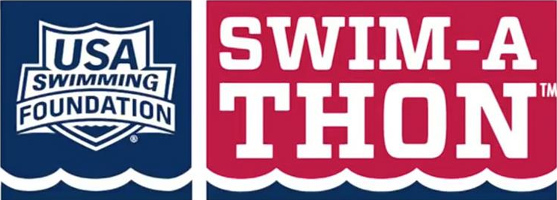 |
 |
 |
Goggles Guide
How to pick the perfect swimming goggles
Lifehacker. Having a perfect pair of goggles is like having a superpower, you can see clearly underwater, and the goggles feel as natural as a part of your own body. Finding that perfect pair can take some trial and error, though. Here are the things you'll want to know when you start your search. READ MORE
Finding a pair of goggles:
The best goggles are the ones that fit comfortably without leaking. Everyone has a different shaped face, and what works for one person isn't necessarily going to work for another. You need to find a pair that will suit the shape of your face.
A quick test - take the goggles out of the packet. Lean over, so your face is facing down towards the floor. Press the eye cups into your eye sockets and let go - they should stay in place if they are a good fit. You can make adjustments to the spread of the eyepiece, but if the goggles don't hold without the strap, at least for a few seconds, they probably will need a very tight strap to keep the water out. Don't be tempted to compensate for a bad fitting pair of goggles by tightening up the head strap. Although this may be necessary for racing, it is really no fun having sore eye sockets after a swim, so you want a pair that are watertight with only a low tension in the strap.
It is always a good idea to try before you buy - find someone at swimming who has a different pair than you and try them out, it will give you the best idea as to whether they will suit you, even if the adjustment isn't perfect.
Care for your goggles:
Caring for your goggles can be a drag, especially to keep them in as-new condition, but it can be worth it. Our top tips:
- After swimming give them a rinse in clean water (e.g., in the shower), the chlorine in the pool can eat away at the seals
- Between swimming sessions, make sure you let your goggles dry out and store goggles in a dry place, not in the bottom of your bag. This is particularly true of those with foam seals, which can breed all sorts of mould and bacteria.
- It can be worth investing in a pouch or using the original box to store your goggles in to protect them - scratched goggles are as hard to see through as fogged up goggles.
Fogging:
Fogged up goggles have to be one of the most annoying things in swimming; not being able to see where you are going let alone the coach, pace clock, etc. can drive you mad! It's a perennial problem, though and happens to everyone, but why and, more importantly, what can we do about it?
Why do goggles fog:
Basically, because the air inside your goggles is moist (it picks up water vapor both from the atmosphere in the pool when you put your goggles on and from the surface of your eyes) and the fact that this air is kept warmer than the water outside. The temperature of your goggle lens drops due to the cooling effect of the water and when a certain temperature (known as the dew point) is reached, the water vapor in the air inside the goggles condenses into plain old water on the surface of the lens -condensation, just like you get on the inside of a car windshield. This layer of condensation is what causes your view to be obstructed.
How can I stop them from fogging:
A few things can help to prevent this from happening, only a couple of which are really practical. For example you could regulate the moisture content or temperature of the air inside your goggles to prevent the dew point from being reached, but this would be very impractical.
The two most successful solutions are:
- Allow a small amount of water into your goggles. The water acts as a windshield wiper as you turn your head, washing away the fog. If you have the right amount of water, it will sit far enough away from your eyes and wont irritate them. This obviously won't work for all strokes (particularly, backstroke!).
- You could use some sort of surfactant on the lenses to prevent condensation from forming, which is the best and most widely used solution. Many swimmers swear by either spitting in or licking their goggles which provides a coating to the lens. The man-made alternative is an anti-fog solution which provides this coating nicely, at a price.
Generally, whichever solution you adopt, it is wise to keep the inside of your goggles clean. Any dirt, particularly in the corners, will act as the starting point for condensation, and mean it will be more easily created. Dirt will also exacerbate the problem, by making it harder to see where you're going.
My goggles always slip when racing - is there anything I can do to stop this:
It can be wise to slightly tighten your goggle strap for racing, but you shouldn't rely exclusively on this to keep your goggles on your head - you need to have a well-fitting pair to begin with. If you do tighten it up, make sure that it doesn't cause the nosepiece to slip and become longer - this will just make the problem worse. If you have a well-fitting pair, properly adjusted and they still come off, there are a couple of other things to try. If the strap slips and the goggles end up around your neck, or even worse in your mouth, try wearing them underneath your swimming cap, this will help keep the strap in place. If the lenses flip off or slip and fill with water, you perhaps should look at your diving technique (poor streamline and too steep dive angle) - talk with your coach, he/she'll help.
"Having uncomfortable goggles can make practice miserable and having goggles that fit well and stay on during a race is imperative for good swims. Just as with suits, swimmers should have more than one pair of goggles...swimmers should not use the same pair of goggles for practice that they do in a meet. There are a number of reasons for this. The first is because goggles wear out and loose their seal after a number of practices and swimmers are more likely to feel the effects of this when they dive off the block at a meet. Also, swimmers should wear their meet goggles tighter than their practice goggles. Young and old swimmers alike are prone to forget to tighten their goggles before their first race and this can lead to goggles in the mouth or around the neck shortly after the dive." -- The Parents Guide to Swimming
Courtesy of Derbyphoenix.com - Thanks!
 |
• PO Box 866 Stafford, VA 22555-0866 • (540) 207-0846 |





